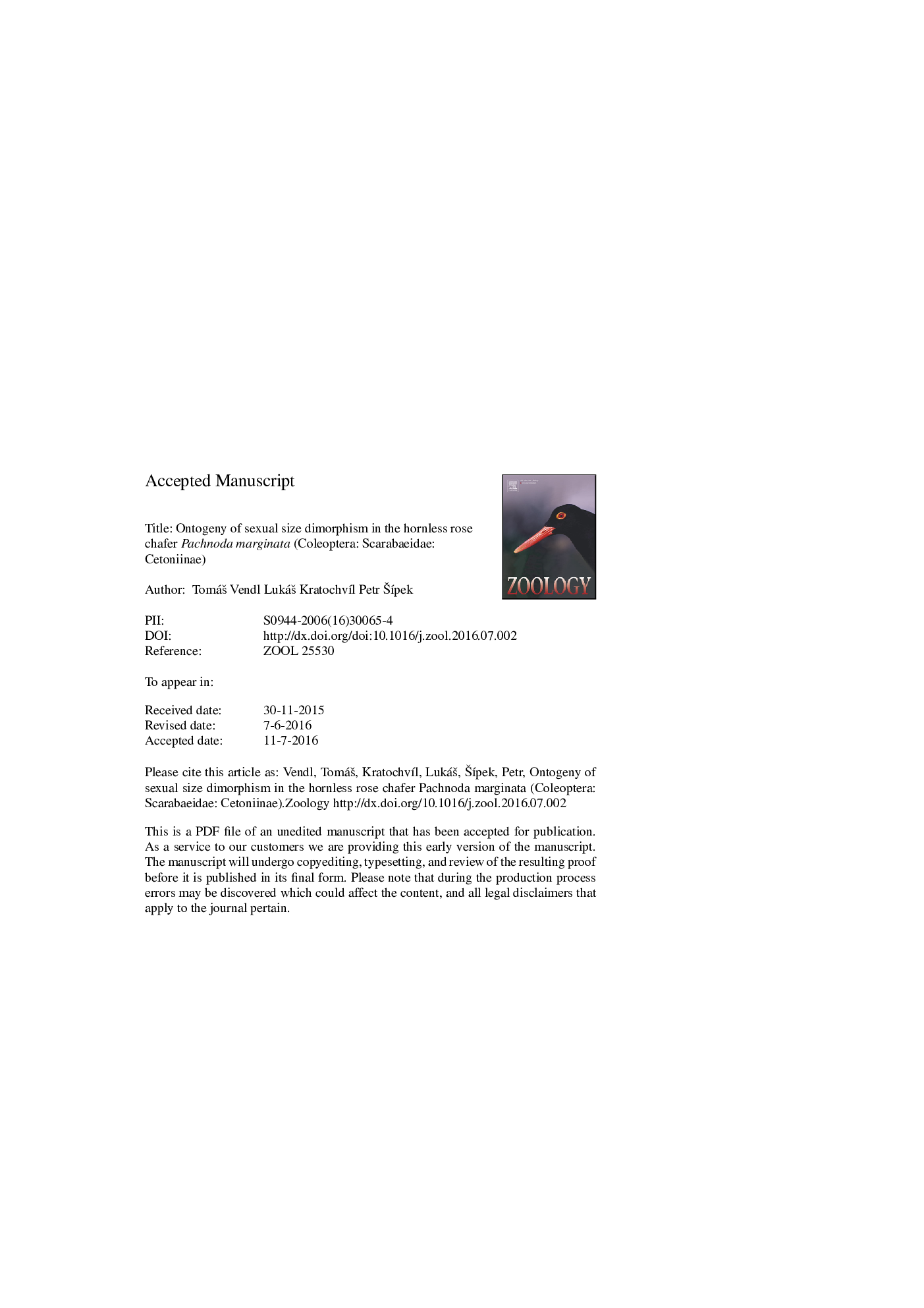| Article ID | Journal | Published Year | Pages | File Type |
|---|---|---|---|---|
| 5586585 | Zoology | 2016 | 34 Pages |
Abstract
Beetles of the subfamily Cetoniinae are distinct and well-known, yet their larval ontogeny, sexual size dimorphism and development remain unknown in most species. This group contains many species with large males with prominent secondary sexual structures, such as cephalic or pronotal horns and elongated forelimbs. The species studied here, Pachnoda marginata, belongs to those species without any obvious dimorphism, the males being almost indistinguishable from the females. In this paper we examine sexual dimorphism in body shape and size in this apparently 'non-dimorphic' species. We further investigate the larval development and proximate causes of sexual size dimorphism, in particular when and how the sexes diverge in their growth trajectories during ontogeny. We found that males are larger than females and that the sexes also differ in body shape - for example, males possess significantly longer forelimbs relative to body size than females. The male-biased sexual size dimorphism along with prolonged forelimbs suggests that sexual selection for larger males may not be limited merely to horned species of rose chafers. The dimorphism in size in P. marginata arises during the second larval instar and basically remains unchanged till maturity. In both sexes the maximum body mass as well as developmental time of particular larval instars were strongly correlated, but time spent in the pupal chamber was not related to previous growth and final body size. The correlation between developmental time and adult size was negative, which may be a reflection of differences in resource allocation or utilisation for growth and development among individuals.
Related Topics
Life Sciences
Agricultural and Biological Sciences
Animal Science and Zoology
Authors
TomáÅ¡ Vendl, LukáÅ¡ KratochvÃl, Petr Å Ãpek,
